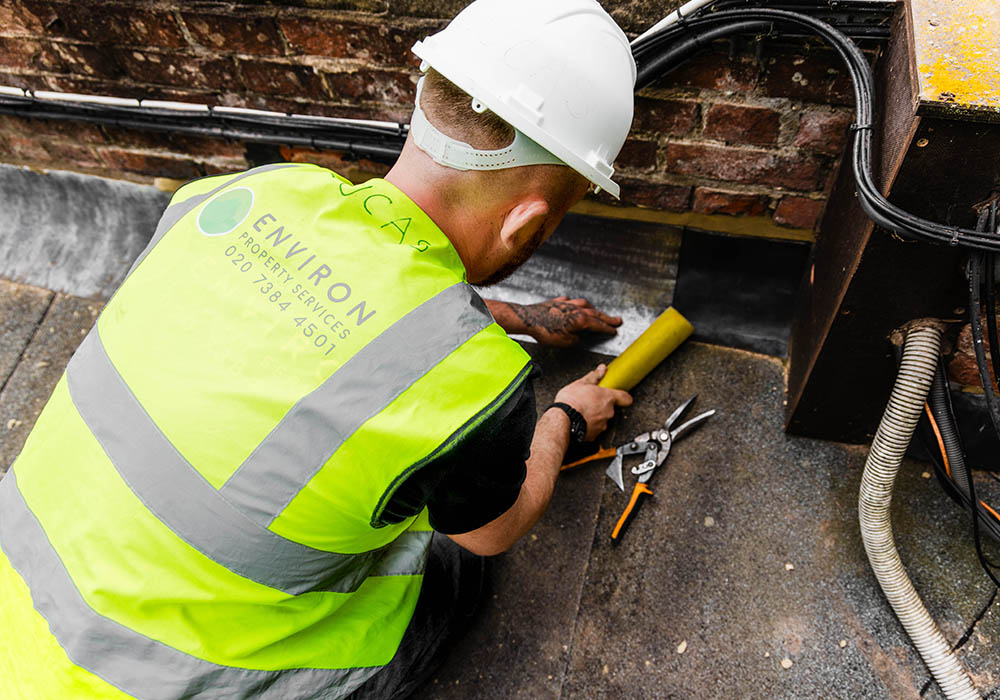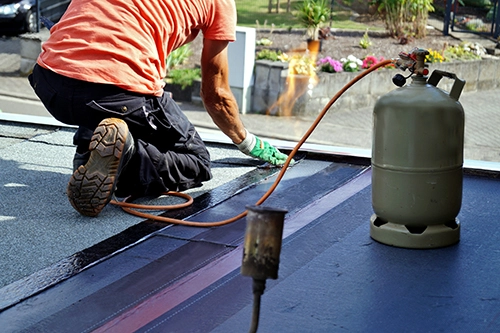- About Us
- Services
- Blog
- Contact
Need a quote?
Is your home extension not feeling as cosy and secure as it once did? This might be a sign that your extension roof needs an assessment by one of our expert roofers. Over time, exposure to harsh weather and general wear and tear can take a toll on any roof, affecting its ability to protect your extension and its temperature. To help you stay ahead of potential issues, we've compiled a list of the top five signs that your extension roof may be in need of repairs.




One of the most obvious indicators of roof problems is water stains on your ceiling or walls. If you notice discoloration or water droplets, it's a clear sign that moisture is finding its way in. Our roofers are always on call to address your concerns about leaks promptly. We strive to always prevent further damage to your property.
Inspect your extension roof for missing or damaged shingles. Shingles play a crucial role in protecting your roof from water and other elements. Any gaps or broken pieces can compromise your roof's central function.
A sagging or uneven roofline is a red flag. It suggests that your extension's roof structure might be weakened, possibly due to water damage or rot. This issue requires immediate attention to avoid a collapse.
Check your gutter system for an excessive amount of granules from your roofing material. If your shingles are losing their granules, it can lead to premature ageing and vulnerability to the elements.
A main cause of concern for any homeowner, high energy bills can be caused by a faulty extension roof in need of repair. A damaged or compromised roof can lead to poor insulation, causing your heating and cooling bills to skyrocket. If you notice a sudden increase in energy costs, it might be linked to your extension roof's condition. Our expert roofers will be able to identify the issue rapidly, and ensure your energy bills remain consistent.
Ignoring these signs could lead to more extensive and costly repairs down the road. If you've identified any of these issues with your extension roof, it's essential to consult with a professional roofing contractor. Our expert team at Environ Roofing can assess the damage and provide you with the best course of action, whether it's repairs or a roof replacement. Protect your investment and ensure the safety and comfort of your home extension.
It depends on the construction, but the minimum weight a flat roof must be capable of bearing is 300lbs. This refers to a concentrated weight where a load is positioned on just one area of the roof. So, for example, a commercial flat roof can approximately support a 300lb HVAC unit in a 2.5×2.5ft single space.
If you opt for a flat roof anywhere on your property, remember that it comes with a need for proper maintenance. Low-slope roofing London-wide should be checked every six months or so, or after spells of bad weather, to spot any signs of damage. No matter how small, these should be addressed before they escalate. Remove any debris (leaves, twigs and so on) regularly to avoid these blocking the gutters and allowing water to pool and stand on the roof.
If there are trees in the close vicinity, keep them cut back to reduce the amount of foliage that falls on your flat roof. And check internally for signs of moisture, dampness or water damage on a regular basis. Spotting problems early means resolving them will be cheaper in the long run.

Building a flat roof can be done in three ways. The simplest and most cost-effective choice for levelled roofing London-wide is to construct a warm roof where a roofing membrane is placed over the insulation that keeps the timber structure warm. Another option is to create a cold roof where insulation is positioned between the rafters under the ply roof covering. This is commonly applied to flat-roofed extensions.
The third method is the hybrid roof that contains diverse elements. Their designs require a gap of ventilation above a warm roof to prevent excess moisture within the roof structure.
If you’re looking for flat roofing local contractors, don’t just select the first firm you come across. Find a roofing company that’s been in business for a while and can demonstrate a good track record in installing, repairing, and replacing flat roofs specifically. Ask for recommendations from your own network or from a local trade association. If you need refurbishment work done to 50% or more of your roof, you’ll need a roofing contractor who can self-certify their work under the Competent Person Scheme. Otherwise, the Building Control department at your local authority will need to approve the job before it begins.
Ask whether they are covered by liability insurance and how long they’ll guarantee the work they will carry out. And never just opt for the cheapest quote unless you’re quite sure they’re the best company for the job. You can’t afford to compromise on your roof as the structural integrity of your property depends on it.
Ensuring your flat roof will comply with building regulations before installation can save property owners time, money and stress. First, the roof must have a slope of around 1:80, with water draining away to one or two roof edges. Waterproofing must be extended up to the adjacent walls with at least 150 mm from the surface of the roof.
Contractors must install ventilation in cold roofs. For warm roofs, the deck must be bonded with a VCL. The roof should have the capacity to withstand strong winds and be sturdy enough to take an individual’s weight. Finally, check whether planning permission is needed. Typically, this is only required if you live in a conservation area or a listed building, or are making significant changes to an existing roof.
If you’re looking for top roofing solutions at competitive rates, check out our range of roofing services at Environ Roofing Company London. To get started, call one of our representatives today!

